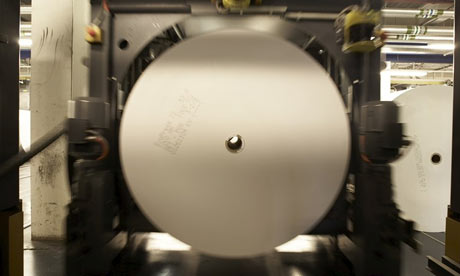Ruth Williams
Sunday Morning Herald, Sydney
When Melbourne company Greenfleet won the right to display the Federal Government's Greenhouse Friendly logo in early 2008, the non-profit tree-planting organisation was congratulated by the Climate Change Minister, Penny Wong.
"Greenfleet's biodiversity forest projects will not only result in a reduction of greenhouse gases, they will also provide valuable habitat for native fauna and assist in the regeneration of the Australian landscape," Senator Wong said.
Greenfleet was the first non-profit organisation to achieve Greenhouse Friendly accreditation as an ''approved abatement provider'', a title it won after a long and expensive process, its chief executive, Sara Gipton, says.
However, for an operation trading in Australia's fledgling voluntary carbon offsets market, one that relies on its reputation to convince supporters to buy its offsets, the credibility bestowed by Federal Government accreditation was worth the time and expense.
But a year after Greenfleet was accredited, Senator Wong announced that the Greenhouse Friendly program would be dumped. It would be superseded by the Government's centrepiece green policy, the Carbon Pollution Reduction Scheme and replaced by a new national carbon offset standard.
It has meant Greenfleet's return on its substantial investment in Greenhouse Friendly is much less than it should have been. But that is not its only problem.
Under the Government's timetable, Greenhouse Friendly will cease to exist on June 30, at which point the carbon offset standard, which was released with little fanfare at the start of December, will come into force. The standard is designed to complement the reduction scheme, but it is uncertain whether the scheme will be passed by Parliament by June 30.
No scheme means no carbon offset standard and no Greenhouse Friendly - a situation that creates a regulatory vacuum for Greenfleet and its peers.
Meanwhile, regulations governing forestry are unlikely to be released until after the scheme's legislation is put to the Senate next week. So when Greenhouse Friendly goes, so will any national, Government-backed method of accrediting forestry carbon offsets.
''At the moment we have massive regulatory uncertainty,'' Ms Gipton says. ''If the legislation doesn't pass, and Greenhouse Friendly is still being shut down on the 30th of June, we have a problem because we don't have a standard which we can tell our supporters, with certainty, that we operate to. It's very important that we have that; people want to be assured that we are operating credibly.''
But the regulatory tangle doesn't end there. Greenfleet offsets emissions with forestry, an abatement method covered by the Kyoto protocol. Were Greenfleet to do nothing, its forestry projects would be lumped in as counting towards Australia's overall emission reduction target - its so-called cap.
This means there would be less incentive for Greenfleet's supporters to offset their emissions, because the offsets generated would not be ''additional'' to the emission cuts Australia has committed to. In effect, they would simply be aiding the pollution of big emitters.
The solution is for Greenfleet to ''opt in'' to the scheme and ''retire'' its permits on a yet-to-be-established registry so they cannot be counted towards the national target and can be considered truly additional. This is Greenfleet's plan. But, unfortunately, Greenfleet can't participate in something that doesn't exist.
The conundrum is an example of how the Government's repeatedly delayed reduction scheme has created confusion among participants in the voluntary carbon market.
'Regardless of what happens in Canberra, Greenfleet will continue to plant trees, and those trees will continue to pull carbon dioxide from the air no matter what form of scheme passes Parliament - if one passes..
''The longer we wait on climate change, the harder the task, and climate change… isn't going to wait for a political solution.'' Ms Gipton says.
A spokeswoman for Senator Wong said: ''The Government is working through the implementation of the national carbon offset standard with stakeholders.''


